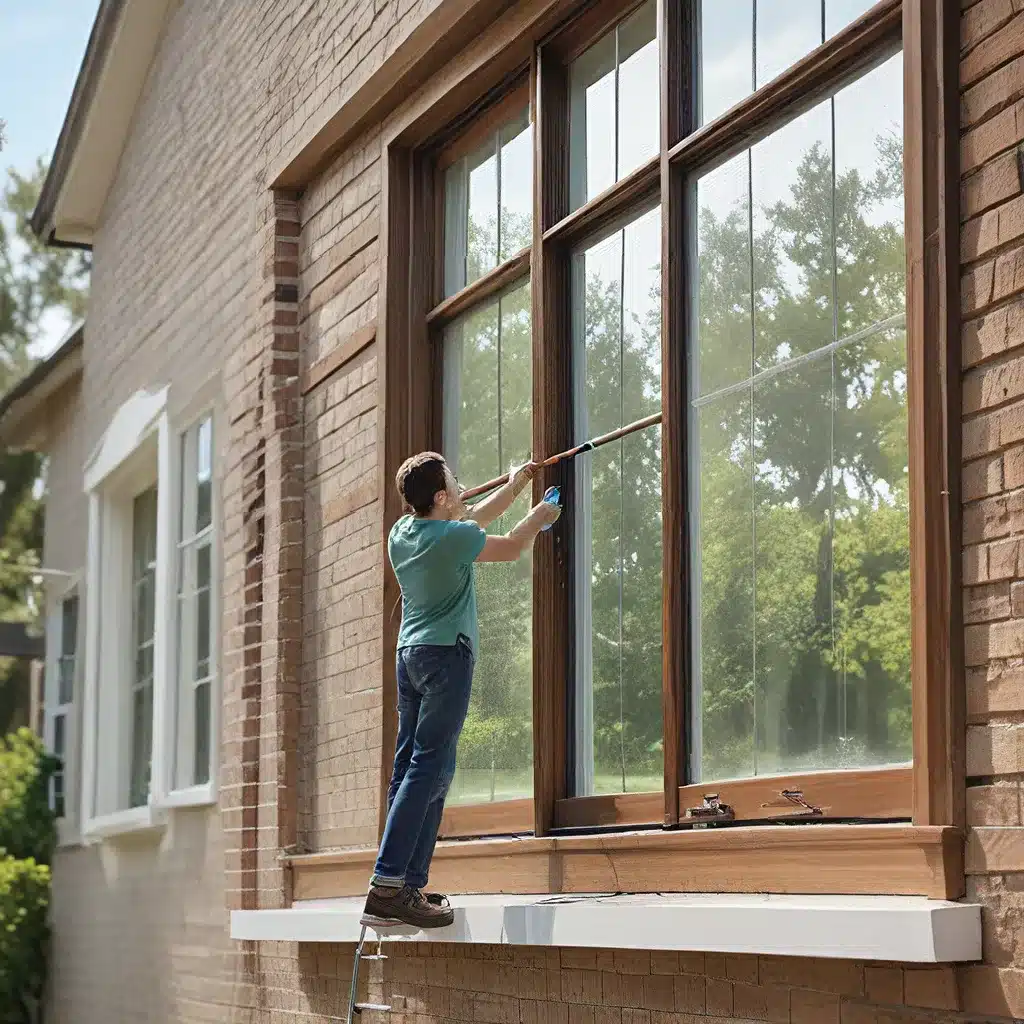As someone who takes pride in maintaining a sparkling clean home, I’ve tried just about every glass cleaner under the sun. From the trusty Windex to the latest eco-friendly concoctions, I’ve had my fair share of successes and failures. But let me tell you, when it comes to achieving a truly streak-free shine on my windows, there’s no replacement for the dynamic duo of vinegar and water.
The Power of Vinegar: A Glass Cleaning Superhero
Now, I know what you’re thinking – vinegar? Isn’t that something my grandma used to clean with? Well, let me tell you, this humble household staple is a green cleaning powerhouse. The secret lies in its acidity, which is the key to breaking down those pesky grease and mineral deposits that can leave your windows looking less than pristine.
As Lisa Bronner eloquently explains, “The acidity of vinegar – acetic acid to be precise – is what will do your work for you. The acid will lift light grease, which is what fingerprints are, and dissolve mineral deposits, which is what water spots are.”
And the best part? You don’t need anything fancy – just good old-fashioned white distilled vinegar. No need to shell out for that expensive “cleaning vinegar” or any other specialty products. The simplicity is what makes this solution so effective and affordable.
The Squeegee: Your Window Cleaning Sidekick
Now, while the vinegar-water mixture is the backbone of my glass cleaning routine, I have to give a shoutout to my trusty squeegee. As Lisa Bronner points out, “a really excellent squeegee or rag” can make all the difference, even if you’re just using plain water.
But not just any old squeegee will do. Quality matters. I’ve learned the hard way that those cheap, plastic-y blades just won’t cut it. They’ll leave you with streaks and smudges galore. No, what you want is a high-quality squeegee with a flexible, durable black rubber edge. It may cost a bit more, but trust me, it’s worth it.
And the best part? You can even replace the rubber blade when it starts to degrade, so you don’t have to shell out for a whole new squeegee every time. It’s a sustainable and cost-effective solution that will have your windows sparkling for years to come.
Tackling Stubborn Soap Scum
Now, let’s talk about those tricky shower doors. We all know the struggle of dealing with that stubborn soap scum that can build up over time. But fear not, my friends, because the vinegar-water solution is here to save the day.
As Lisa Bronner explains, “An acid will dissolve soap scum, and the vinegar-based GIY Glass Cleaner is acidic. This will work well if you have a light layer of soap scum and it is only on a durable surface such as glass, porcelain enamel, or acrylic.”
However, if the soap scum is heavily built up, you may need to bring in the big guns – Castile soap or Sal Suds. These surfactants will help “arrest the dirt and grime and carry it away,” ensuring a sparkling clean finish.
Just be mindful if you have any soft stone surfaces, like marble or limestone, as the acid in the vinegar-water solution can potentially etch those materials. In those cases, it’s best to use a gentler, non-acidic cleaner and be extra cautious.
Keeping Screens Squeaky Clean
But the cleaning fun doesn’t stop there! Let’s not forget about those often-overlooked window screens. As Lisa Bronner points out, “Screens catch a lot of debris, and you’ll be amazed at how much more light is able to come through them once they’re cleaned.”
For this task, I prefer to reach for Sal Suds, as the Castile soap can sometimes leave an unsightly soap scum residue on outdoor surfaces. Sal Suds, being a biodegradable detergent, is the way to go for a streak-free, environmentally friendly screen cleaning experience.
Busting the Vinegar Myth
Now, before I wrap up, I feel it’s important to address a common green cleaning myth that’s been passed down through the generations – the idea that vinegar is a wonder cleaner for all surfaces.
As Lisa Bronner expertly explains, while vinegar is indeed a fantastic glass cleaner thanks to its acidity, it’s not necessarily the best choice for general surface cleaning. “First, it does not have the ability to bind to and carry away large amounts of grime like a surfactant soap or detergent can. Second, as an acid, vinegar can cause etching into certain stones, resins, and acrylics.”
So, while vinegar is still a valuable tool in my cleaning arsenal, I make sure to use it judiciously, reserving it primarily for glass, laundry, and carpet rinsing. For disinfecting and heavy-duty cleaning, I rely on Sal Suds or other surfactant-based cleaners to get the job done right.
The Squeaky Clean Conclusion
Well, there you have it, my friends – the secrets to achieving a spot-free shine on your windows and glass surfaces. From the powerhouse duo of vinegar and water to the trusty squeegee, I’ve shared all my hard-earned wisdom to help you ditch the streaks and enjoy a pristine view.
And remember, when it comes to green cleaning, simplicity is often the key. Embrace the DIY spirit and take control of your cleaning routine – your windows (and the planet) will thank you.
Happy cleaning, and may your windows sparkle with effortless elegance!







